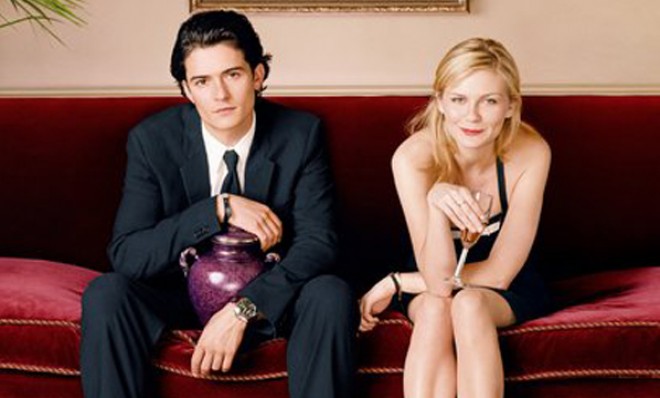Girls on Film: Why it's time to retire the term 'Manic Pixie Dream Girl'
This once-useful piece of critical shorthand has devolved into laziness and sexism


As long as men have written female characters, entertainment has been packed with girls whose individuality is just a means for some tiresome hero to work out his own ennui. From William Shakespeare's Juliet Capulet to Truman Capote's Holly Golightly, the characters' uniqueness was like an ideological rib-eye that the down-on-his-luck hero could feast on to thrive and prosper in his own life. These idiosyncratic muses were finally given a common name in 2007: The "Manic Pixie Dream Girl" — and now, in 2013, it's time to put the term to rest.
The term — which is often shortened to MPDGs — was originally coined by The AV Club's Nathan Rabin to describe Kirsten Dunst's character in Cameron Crowe's Elizabethtown. Rabin wrote:
No existential quandary is so great that it can't be solved by the perfect combination of pop song and dream girl, a world of giddy pop epiphanies and gentle humanism unencumbered by protective irony or sneering cynicism. […] Dunst embodies a character type I like to call The Manic Pixie Dream Girl (see Natalie Portman in Garden State for another prime example). The Manic Pixie Dream Girl exists solely in the fevered imaginations of sensitive writer-directors to teach broodingly soulful young men to embrace life and its infinite mysteries and adventures. The Manic Pixie Dream Girl is an all-or-nothing-proposition. Audiences either want to marry her instantly (despite The Manic Pixie Dream Girl being, you know, a fictional character) or they want to commit grievous bodily harm against them and their immediate family. [The AV Club, 2007]
But what, exactly, makes a character a Manic Pixie Dream Girl has always been a fluid construct. Rabin's oft-quoted definition doesn't actually describe the girl; it describes the audience's experience of watching her. But with the references to Portman and Dunst's roles in Garden State and Elizabethtown, a rough list of attributes could be inferred: The MPDG lives life "differently" than the average girl. She loves indie music, whimsy, and any number of idiosyncratic hobbies, from barefoot tap dancing to driving on "gloriously confusing" roads.
The Week
Escape your echo chamber. Get the facts behind the news, plus analysis from multiple perspectives.

Sign up for The Week's Free Newsletters
From our morning news briefing to a weekly Good News Newsletter, get the best of The Week delivered directly to your inbox.
From our morning news briefing to a weekly Good News Newsletter, get the best of The Week delivered directly to your inbox.
The perfect timing of Rabin's cleverly worded phrase allowed it to take off like wildfire as a kind of shorthand among film fans. After all, Zooey Deschanel, who's often cited as a real-life Manic Pixie Dream Girl, was just about to break into the mainstream. And just a few years earlier, Charlie Kaufman and Michel Gondry put themselves on the map when they collaborated to create the MPDG Clementine Kruczynski, Kate Winslet's wacky-hair-colored character in Eternal Sunshine of the Spotless Mind.
Given the term's popularity, it only took a year for the The AV Club to return to the topic, expanding the confines of the term beyond the contemporary to include the likes of Audrey Hepburn (Breakfast at Tiffany's), Katharine Hepburn (Bringing Up Baby), Shirley Maclaine (The Apartment), and Goldie Hawn (Butterflies Are Free). With each step, the MPDG designation was expanded to encompass more female characters — but the inclusion of Diane Keaton's complex, wonderfully realized Annie Hall was a tip-off that the term "Manic Pixie Dream Girl" was beginning to expand in some insidious ways.
In its expansion, the Manic Pixie Dream Girl designation moved from putting a spotlight on questionably hollow female characters to marginalizing and dismissing all manner of diverse female characters on film. Pulp Fiction's Mrs. Mia Wallace was thrown into the mix for being impulsive and having bangs, though she never teaches Vincent Vega about life. Alyssa is a kind of muse in the oft-listed Chasing Amy, but her characterization is far from superficial. Even Belle from Disney's Beauty and the Beast has received the designation.
Slate wondered recently if the archetype was dead. Many of the top "offenders" came out years ago — and in recent years, films like (500) Days of Summer and Ruby Sparks have shown the holes of the archetype; Deschanel's Summer struggled to have a relationship with a man who idealized her into quirks, and Zoe Kazan's Ruby was stuck at the whims of the male author who created her and wants to control her. But despite these subversions, the Manic Pixie Dream Girl label thrives because its boundaries continue to grow — and because the internet age thrives with a new group to snark about.
A free daily email with the biggest news stories of the day – and the best features from TheWeek.com
"Manic Pixie Dream Girl" was useful when it commented on the superficiality of female characterizations in male-dominated journeys, but it has since devolved into a pejorative way to deride unique women in fiction and reality. It's no longer a call to arms for more well-rounded female characters in fiction, but a way to chastise difference from the norm. MPDG is now the catch-all term for unusual interests and style — a film-related off-shoot of the Hipster designation evolving from people who wear/use things ironically to anyone with retro interests. Last week, Rookie Mag ran a piece by a girl who fears that her genuine interests have made many pigeonhole her as a real-life quirky MPDG. A woman at XOJane writes: "I was a quirky girl and on top of that, I wrote really well to the hearts and minds of other quirky girls … Could I really be the type of woman whose very existence was demeaning to other women?"
Instead of bolstering women to demand more independent and fully-realized female characters, the term has divided them, simply because the Manic Pixie Dream Girl is different. The truth is that the MPDG is just a part of a larger problem; countless female characters have been written just to teach men to embrace life and be successful. The MPDG's joie de vivre makes her stick out among female characters, but in a way that prevents more serious dialogue. She's easier to lump together and dismiss, as if the MPDG isn't part of a much bigger problem that has nothing to do with the music a character listens to or the clothing a character wears.
What makes this problem even more frustrating is that many MPDGs do break some genuine ground for female characters. These aren't women written as conforming to peer pressure, adding to the smattering of superficial female characters lacking unique personas. They're not submitting to makeovers that will turn them from outcast to queen bee. Holly Golightly isn't ashamed to be an escort in a world where women are expected to be proper; Portman's Sam takes pride in the way she finds humor in life; Deschanel's Summer doesn't care if the outside world thinks she's weird.
"Manic Pixie Dream Girl" once had its place as a clever way to describe female characters that were all quirk and no depth, existing solely for the benefit of a broody male lead — but now, it's a term more damaging than it is helpful. "Manic Pixie Dream Girl" is used too often to chastise the one thing that gives supporting women that little bit of oomph in marginalized roles — a personality that expands beyond basic gender stereotypes like boys, clothing, and gossip, seen so often in entertainment. "Manic Pixie Dream Girl" distracts us from the real problems of superficial female characters, and it inspires real-life women to question the validity and worth of each other's interests. And when a term has outlived its usefulness and become a part of the very marginalizing trend that it was designed to rally against, it's time to put it to rest for good.
Girls on Film is a weekly column focusing on women and cinema. It can be found at TheWeek.com every Friday morning. And be sure to follow the Girls on Film Twitter feed for additional femme-con.
Monika Bartyzel is a freelance writer and creator of Girls on Film, a weekly look at femme-centric film news and concerns, now appearing at TheWeek.com. Her work has been published on sites including The Atlantic, Movies.com, Moviefone, Collider, and the now-defunct Cinematical, where she was a lead writer and assignment editor.



